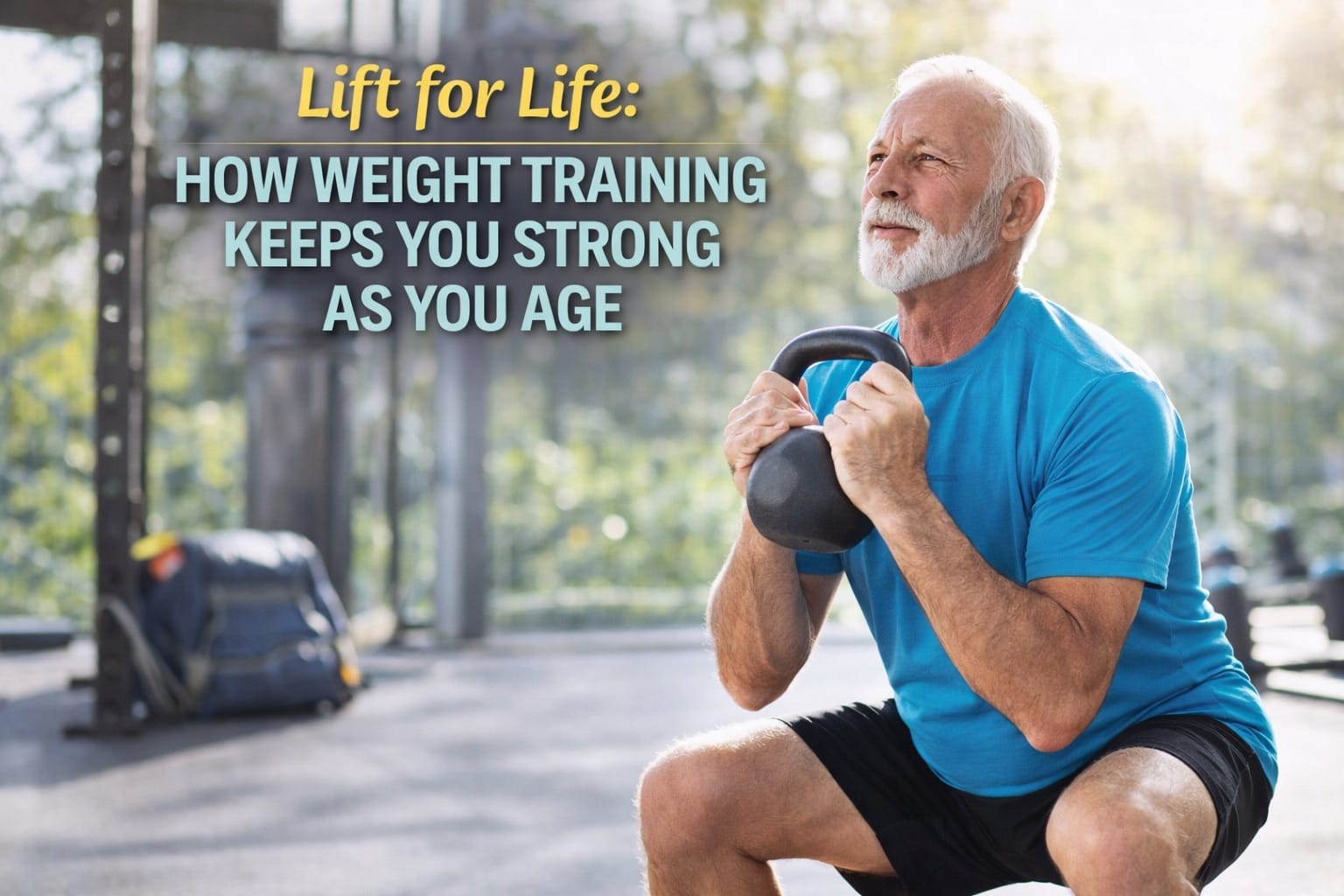Aging doesn't have to mean slowing down. Sure, your muscles and bones might not bounce back like they did in your 20s, but here's the good news: lifting weights can keep you strong, steady, and ready for life's challenges well into your later years. Dr. Darren G. Candow, a top researcher in exercise science, shows in his review "Creatine supplementation and resistance training for healthy aging" that hitting the weights fights age-related muscle loss (called sarcopenia) and even supports your bones. This isn't just about looking good; it's about staying tough for the long haul. Let's break down why lifting matters as you age and how to make it work for you.
Why Aging Hits Hard (And How Lifting Fights Back)
Picture this: after 50, your muscle mass starts slipping away at about 0.8% a year, and strength drops even faster, at 1.2-1.5% yearly after your 40s. That's muscle wasting creeping in, and it's not just a number. It can mean weaker legs for climbing stairs, shakier balance, or even achy bones from less support. Candow's research digs into this, showing that muscle wasting isn't just muscle loss. It's tied to weaker bones and a higher risk of falls. Left unchecked, it's a fast track to feeling frail.
But here's where lifting changes the game. Candow's review pulls together evidence that weight training builds muscle mass and strength, even as you age. It's like hitting a reset button. Stronger muscles mean better support for your skeleton, less strain on your joints, and more power to stay active. Add in a little science-backed boost like creatine, and you're not just holding the line, you're pushing forward.
The Big Wins: Muscle, Bones, and Beyond
Candow's work isn't guesswork. It's based on solid studies. His review highlights how weight training boosts lean muscle mass by about 1-1.37 kg in older adults (around 57-70 years old) over months of steady lifting. That's real muscle you can feel when you carry groceries or chase grandkids. Strength jumps too, upper and lower body, making everyday moves easier. Lower-body gains are especially key since those muscles fade fastest with age.
Then there's your bones. Aging thins them out (hello, bone-thinning risk), but lifting can help. Candow notes that while creatine's bone benefits are still being studied, weight training alone puts strain on your skeleton in a good way, nudging it to stay dense and tough. Some research even hints creatine might slow bone loss. For example, one study showed a 1.2% drop versus 3.9% in non-users over a year in one study of women after menopause. Plus, stronger legs and better balance from lifting cut your fall risk, keeping you upright and break-free.
How to Start (Or Keep) Lifting as You Age
You don't need a gym membership or a bodybuilder's schedule to make this work. Candow's findings suggest a few key moves to stay strong:
- Start Simple: Try 2-3 sessions a week, 20-30 minutes each. Bodyweight squats, push-ups, or light dumbbell rows are perfect kickoffs.
- Build Up: Aim for 8-12 reps of 8-10 exercises like leg presses, chest presses, or back extensions. Candow's studies used setups like this with older adults.
- Add Weight Slowly: Once 10 reps feel easy, bump up the weight a bit (2-5 lbs). It's called slow progress, and it's your secret to steady gains.
- Mix in Creatine: Candow's research shows 3-5 grams daily boosts muscle and strength results. Toss it in a shake and lift like you mean it.
No matter your age, staying consistent beats going hard. Start where you're at. Knees creaky? Use a chair for squats. Been lifting forever? Keep challenging yourself. The key is sticking with it.
Tracking Your Strength with Easy Reps
Here's where it gets fun: seeing your progress. Candow's studies show gains take weeks or months, not days. That's why logging your lifts matters. With Easy Reps, you can track every squat, every press, and watch your strength climb over time. The app's progress charts let you see how those 3-5 grams of creatine or that extra 5 lbs on the bar turn into real power. It's not just data. It's proof you're defying the years. Aging health seekers or long-time lifters, you'll love watching your numbers tell the story of your strength.
Tips to Lift Smart as You Age
- Warm Up: Five minutes of light walking or arm swings gets your body ready.
- Fuel Right: Post-workout protein (like eggs or a shake) plus creatine feeds your muscles.
- Rest Well: Take a day between sessions. Recovery builds strength too.
- Listen Up: Sore is fine; pain isn't. Ease off if joints complain.
Candow's review found no big safety risks with creatine or lifting in older adults. Liver and kidneys held up fine in studies. Just check with a doc if you're new to this.
Stay Strong for the Long Run
Lifting isn't just for the young guns. Dr. Darren G. Candow's review "Creatine supplementation and resistance training for healthy aging" shows it's a powerhouse for keeping muscle, supporting bones, and cutting fall risks as you age. Whether you're 30 planning ahead or 60 fighting back, weight training builds a body that lasts. Pair it with creatine, log it in Easy Reps, and you're not just aging, you're thriving. Ready to lift for life? Download Easy Reps free today and track your way to lasting strength.
For more on how creatine and weight training benefit aging muscle and bone, check out Dr. Candow's full review: Effectiveness of Creatine Supplementation on Aging Muscle and Bone: Focus on Falls Prevention and Inflammation.
